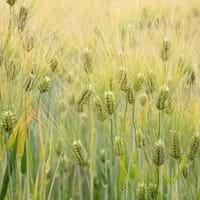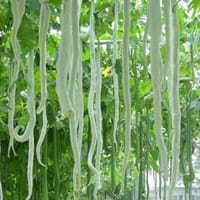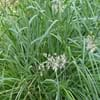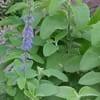Origin
North America, South America, Europe, Southern Africa, Asia
India, Philippines, Southeast Asia
Types
Hulled Barley, Hulless Barley, Barley Grits
Not Available
Number of Varieties
Not Available
Habitat
Humid climates
Loamy soils, Moist Soils, Subtropical climates
USDA Hardiness Zone
Not Available
5-7
AHS Heat Zone
Not Available
12-1
Sunset Zone
Not Available
A1, A2, A3, H1, H2, 1a, 1b, 2a, 2b, 3a, 3b, 4, 5, 6, 7, 8, 9, 10, 11, 12, 13, 14, 15, 16, 17, 18, 19, 20, 21, 22, 23, 24
Habit
Not Available
Vining/Climbing
Minimum Height
Not Available
Minimum Width
Not Available
Flower Color
Not Available
Yellow, Orange, Dark Green
Flower Color Modifier
Bicolor
Bicolor
Fruit Color
Brown, Gold
Yellow, Dark Green
Leaf Color in Spring
Green, Light Green, Blue Green, Gray Green
Green, Dark Green
Leaf Color in Summer
Light Green
Green, Dark Green
Leaf Color in Fall
Not Available
Green, Dark Green
Leaf Color in Winter
Not Available
Not Available
Leaf Shape
Grass like
Palmate
Plant Season
Not Available
Summer, Fall
Sunlight
Full Sun
Full Sun
Growth Rate
Fast
Very Fast
Type of Soil
Loam, Sand
Loam, Sand
The pH of Soil
Not Available
Neutral
Soil Drainage
Well drained
Well drained
Bloom Time
Spring, Summer
Indeterminate
Tolerances
Drought
Drought
Where to Plant?
Ground
Ground
How to Plant?
Seedlings
Seedlings
Plant Maintenance
Medium
Medium
Watering Requirements
Requires watering in the growing season
Keep ground moist, Requires regular watering
In Summer
Lots of watering
Lots of watering
In Spring
Moderate
Moderate
In Winter
Average Water
Average Water
Soil pH
Not Available
Neutral
Soil Type
Loam, Sand
Loam, Sand
Soil Drainage Capacity
Well drained
Well drained
Sun Exposure
Full Sun
Full Sun
Pruning
Do not prune during shooting season
Cut out old flower stalks, Remove dead or diseased plant parts
Fertilizers
All-Purpose Liquid Fertilizer
Nitrogen, N-P-K balanced liquid fertilizer, Potassium
Pests and Diseases
Red blotch
Army-worms, Bacterial leaf spot, Blight, Cucumber beetles, Cucumber mosaic, Cutworms, Fusarium leaf spot, Red spider mite
Plant Tolerance
Drought
Full Sun, Salt and Soil Compaction
Flowers
Not Available
Showy
Flower Petal Number
Single
Single
Edible Fruit
Not Available
Yes
Foliage Texture
Fine
Coarse
Foliage Sheen
Matte
Matte
Attracts
Not Available
Bees, Flies, Flying insects
Allergy
Abdominal pain, breathing problems, Eczema, Headache, Itchiness, Red eyes, Runny nose, Sinuses, sneezing, Sore eyes, Watery eyes, wheezing
Hypoglycaemic Coma, Irregular Heart Rhythm, Miscarriage
Aesthetic Uses
Not Used For Aesthetic Purpose
Not Used For Aesthetic Purpose
Beauty Benefits
Not Available
Glowing Skin, Moisturizing, Nourishes scalp
Environmental Uses
Air purification
Food for animals
Medicinal Uses
Asthma, Bronchitis, Diabetes, Diarrhea
Diabetes, Gastrointestinal disorders, Jaundice, Laxative, Leprosy, Weight loss
Part of Plant Used
Seeds
Fruits, Leaves
Other Uses
Used As Food, Used in making beverages
Cosmetics, Culinary use, Repellent
Used As Indoor Plant
No
No
Used As Outdoor Plant
Yes
Yes
Garden Design
Cutflower, Dried Flower/Everlasting, Edible, Wildflower
Dried Flower/Everlasting, Vine
Botanical Name
HORDEUM vulgare
Trichosanthes cucumerina
Common Name
Barley
snake gourd, serpent gourd, chichinda, padwal
In German
Gerste
Schlangenhaargurke
In French
orge
Trichosanthes cucumerina
In Spanish
cebada
snake gourd
In Greek
κριθάρι
φίδι κολοκύθα
In Portuguese
cevada
snake gourd
In Polish
jęczmień
Gurdlina ogórkowata
In Latin
hordei
snake gourd
Phylum
Magnoliophyta
Magnoliophyta
Class
Liliopsida
Magnoliopsida
Order
Cyperales
Cucurbitales
Family
Poaceae
Cucurbitaceae
Clade
Angiosperms, Commelinids, Monocots
Angiosperms, Eudicots, Rosids
Tribe
Triticeae
Not Available
Subfamily
Pooideae
Papilionoideae
Number of Species
Not Available
Properties of Barley and Snake Gourd
Wondering what are the properties of Barley and Snake Gourd? We provide you with everything About Barley and Snake Gourd. Barley doesn't have thorns and Snake Gourd doesn't have thorns. Also Barley does not have fragrant flowers. Barley has allergic reactions like Abdominal pain, breathing problems, Eczema, Headache, Itchiness, Red eyes, Runny nose, Sinuses, sneezing, Sore eyes, Watery eyes and wheezing and Snake Gourd has allergic reactions like Abdominal pain, breathing problems, Eczema, Headache, Itchiness, Red eyes, Runny nose, Sinuses, sneezing, Sore eyes, Watery eyes and wheezing. Compare all the properties and characteristics of these two plants. Find out which of these plant can be used as indoor plant. If you are interested to decorate your house and garden, find out aesthetic uses, compare them and select the plant which will beautify your surrounding. Along with beautification, try comparing medicinal and edible uses of Barley and Snake Gourd and you can choose the plant having best and most benefits.
Season and Care of Barley and Snake Gourd
Season and care of Barley and Snake Gourd is important to know. While considering everything about Barley and Snake Gourd Care, growing season is an essential factor. Barley season is Not Available and Snake Gourd season is Not Available. The type of soil for Barley is Loam, Sand and for Snake Gourd is Loam, Sand while the PH of soil for Barley is Not Available and for Snake Gourd is Neutral.
Barley and Snake Gourd Physical Information
Barley and Snake Gourd physical information is very important for comparison. Barley height is Not Available and width Not Available whereas Snake Gourd height is 60.00 cm and width 90.00 cm. The color specification of Barley and Snake Gourd are as follows:
Barley flower color: Not Available
Barley leaf color: Green, Light Green, Blue Green and Gray Green
Snake Gourd flower color: Yellow, Orange and Dark Green
- Snake Gourd leaf color: Green, Dark Green
Care of Barley and Snake Gourd
Care of Barley and Snake Gourd include pruning, fertilizers, watering etc. Barley pruning is done Do not prune during shooting season and Snake Gourd pruning is done Cut out old flower stalks and Remove dead or diseased plant parts. In summer Barley needs Lots of watering and in winter, it needs Average Water. Whereas, in summer Snake Gourd needs Lots of watering and in winter, it needs Average Water.





